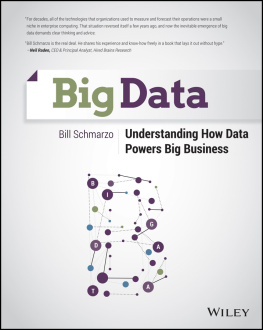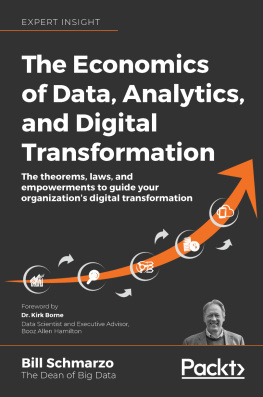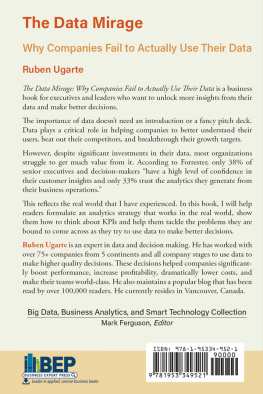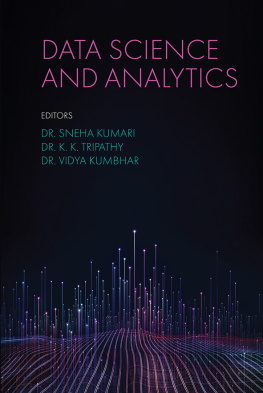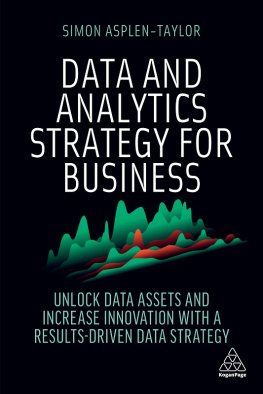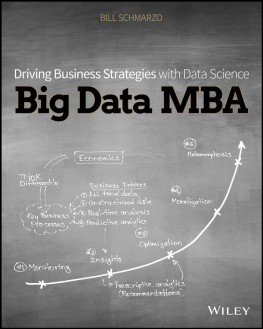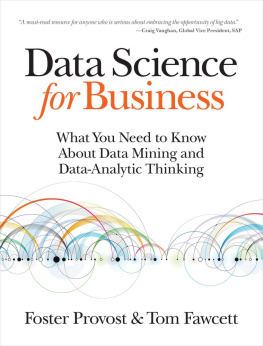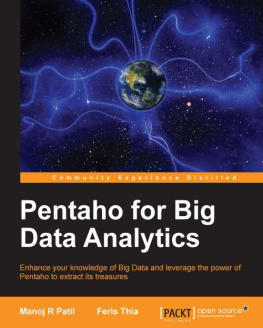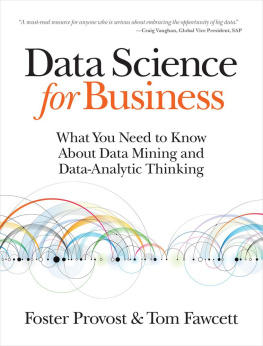
Introduction
Big data is today's technology hot topic. Such technology hot topics come around every four to five years and become the must have technologies that will lead organizations to the promised landthe silver bullet that solves all of our technology deficiencies and woes. Organizations fight through the confusion and hyperbole that radiate from vendors and analysts alike to grasp what the technology can and cannot do. In some cases, they successfully integrate the technology into the organization's technology landscapetechnologies such as relational databases, Enterprise Resource Planning (ERP), client-server architectures, Customer Relationship Management (CRM), data warehousing, e-commerce, Business Intelligence (BI), and open source software.
However, big data feels different, maybe because at its heart big data is not about technology as much as it's about business transformationtransforming the organization from a retrospective, batch, data constrained, monitor the business environment into a predictive, real-time, data hungry, optimize the business environment. Big data isn't about business parity or deploying the same technologies in order to be like everyone else. Instead, big data is about leveraging the unique and actionable insights gleaned about your customers, products, and operations to rewire your value creation processes, optimize your key business initiatives, and uncover new monetization opportunities. Big data is about making money, and that's what this book addresseshow to leverage those unique and actionable insights about your customers, products, and operations to make money.
This book approaches the big data business opportunities from a pragmatic, hands-on perspective. There aren't a lot of theories here, but instead lots of practical advice, techniques, methodologies, downloadable worksheets, and many examples I've gained over the years from working with some of the world's leading organizations. As you work your way through this book, you will do and learn the following:
- Educate your organization on a common definition of big data and leverage the Big Data Business Model Maturity Index to communicate to your organization the specific business areas where big data can deliver meaningful business value (Chapter 1).
- Review a history lesson about a previous big data event and determine what parts of it you can apply to your current and future big data opportunities (Chapter 2).
- Learn a process for leveraging your existing business processes to identify the right metrics against which to focus your big data initiative in order to drive business success (Chapter 3).
- Examine some recommendations and learnings for creating a highly efficient and effective organizational structure to support your big data initiative, including the integration of new roleslike the data science and user experience teams, and new Chief Data Office and Chief Analytics Officer rolesinto your existing data and analysis organizations (Chapter 4).
- Review some common human decision making traps and deficiencies, contemplate the ramifications of the death of why, and understand how to deliver actionable insights that counter these human decision-making flaws (Chapter 5).
- Learn a methodology for breaking down, or functionally decomposing, your organization's business strategy and key business initiatives into its key business value drivers, critical success factors, and the supporting data, analysis, and technology requirements (Chapter 6).
- Dive deeply into the big data Masters of Business Administration (MBA) by applying the big data business value driversunderleveraged transactional data, new unstructured data sources, real-time data access, and predictive analyticsagainst value creation models such as Michael Porter's Five Forces Analysis and Value Chain Analysis to envision where and how big data can optimize your organization's key business processes and uncover new monetization opportunities (Chapter 7).
- Understand how the customer and product insights gleaned from new sources of customer behavioral and product usage data, coupled with advanced analytics, can power a more compelling, relevant, and profitable customer experience (Chapter 8).
- Learn an envisioning methodologythe Vision Workshopthat drives collaboration between business and IT stakeholders to envision what's possible with big data, uncover examples of how big data can impact key business processes, and ensure agreement on the big data desired end-state and critical success factors (Chapter 9).
- Learn a process for pulling together all of the techniques, methodologies, tools, and worksheets around a process for identifying, architecting, and delivering big data-enabled business solutions and applications (Chapter 10).
- Review key big data technologies (Hadoop, MapReduce, Hive, etc.) and analytic developments (R, Mahout, MADlib, etc.) that are enabling new data management and advanced analytics approaches, and explore the impact these technologies could have on your existing data warehouse and business intelligence environments (Chapter 11).
- Summarize the big data best practices, approaches, and value creation techniques into the Big Data Storymapa single image that encapsulates the key points and approaches for delivering on the promise of big data to optimize your value creation processes and uncover new monetization opportunities (Chapter 12).
- Conclude by reviewing a series of calls to action that will guide you and your organization on your big data journeyfrom education and awareness, to the identification of where and how to start your big data journey, and through the development and deployment of big data-enabled business solutions and applications (Chapter 13).
- We will also provide materials for download on www.wiley.com/go/bigdataforbusiness , including the different envisioning worksheets, the Big Data Storymap, and a training presentation that corresponds with the materials discussed in this book.
The beauty of being in the data and analytics business is that we are only a new technology innovation away from our next big data experience. First, there was point-of-sale, call detail, and credit card data that provided an earlier big data opportunity for consumer packaged goods, retail, financial services, and telecommunications companies. Then web click data powered the online commerce and digital media industries. Now social media, mobile apps, and sensor-based data are fueling today's current big data craze in all industriesboth business-to-consumer and business-to-business. And there's always more to come! Data from newer technologies, such as wearable computing, facial recognition, DNA mapping, and virtual reality, will unleash yet another round of big data-driven value creation opportunities.
The organizations that not only survive, but also thrive, during these data upheavals are those that embrace data and analytics as a core organizational capability. These organizations develop an insatiable appetite for data, treating it as an asset to be hoarded, not a business cost to be avoided. Such organizations manage analytics as intellectual property to be captured, nurtured, and sometimes even legally protected.
This book is for just such organizations. It provides a guide containing techniques, tools, and methodologies for feeding that insatiable appetite for data, to build comprehensive data management and analytics capabilities, and to make the necessary organizational adjustments and investments to leverage insights about your customers, products, and operations to optimize key business processes and uncover new monetization opportunities.

